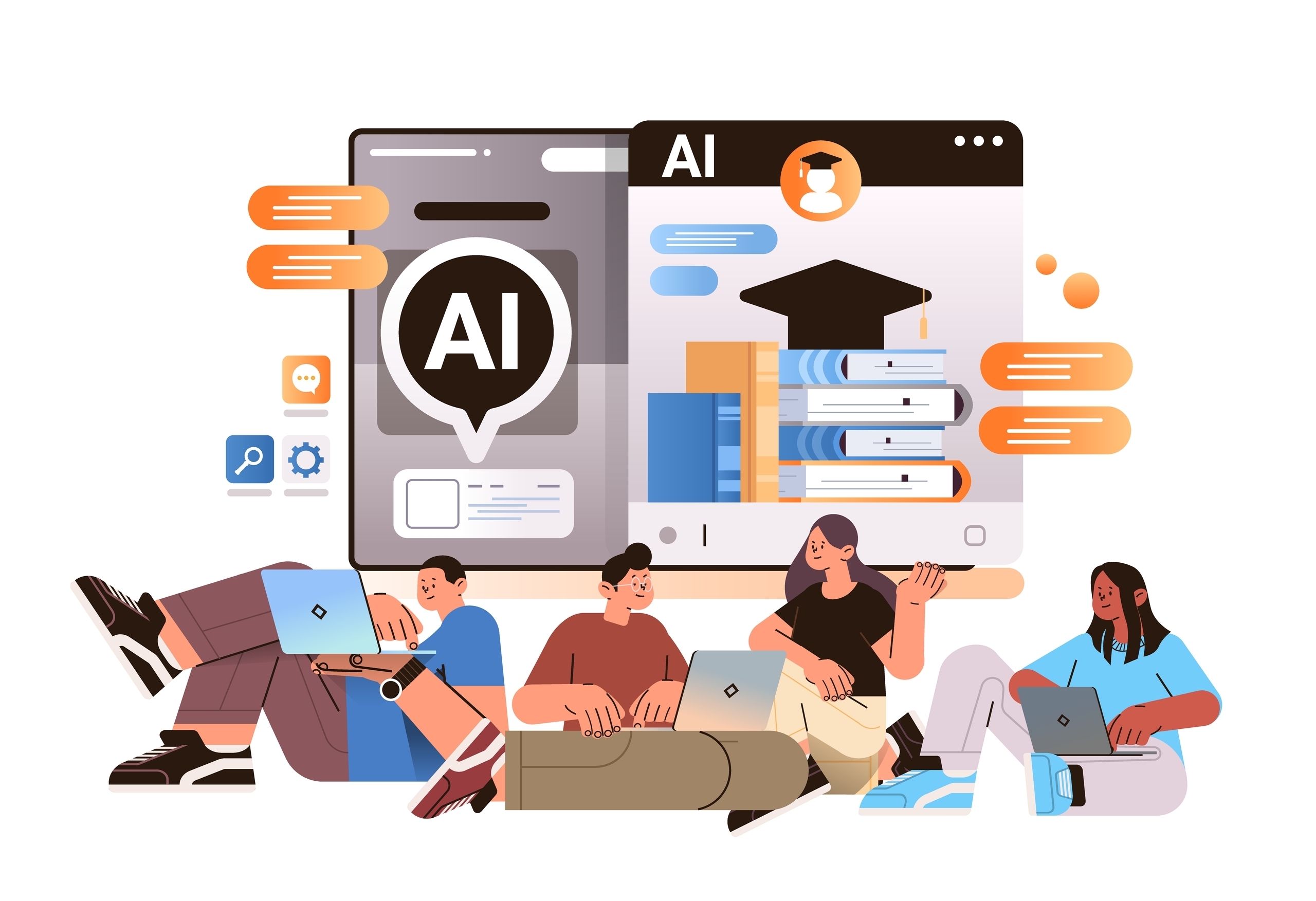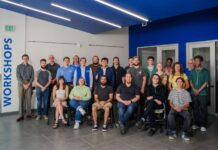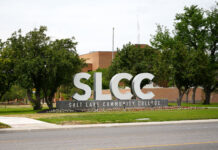
Anne Canavan has been teaching college English and related subjects for more than 20 years. She sees artificial intelligence as simply the latest wave in a long history of technological shifts in education.
Canavan, who is also the associate director of Salt Lake Community College’s Student Writing and Reading Center, believes AI will end up being used in a similar fashion to the microwave — helpful for certain tasks but not a replacement for human thinking and creativity.
Canavan explained that when microwaves became widely available around the 1980s, the general population thought ovens and stovetops would become relatively useless — but that’s not what happened.
“What do we use microwaves for now? We use them to reheat food that we have created on other technologies, or for very specialized tasks,” she said.
Currently, there exists a growing concern that overreliance on AI could lead to a lack of human writing, thinking, or creativity. SLCC psychology major Simmone Pannunzio shares this concern.
“I feel like I’m here to learn and gain a skill,” said Pannunzio, who explained that she only uses AI when she is falling behind or needs help understanding a topic, not for assistance in completing assignments. “I just don’t want to have someone give me the answer, because I’m trying to learn a little bit, at least.”
While Pannunzio is hesitant about using AI, Canavan is concerned that other students are relying on it too much for creative writing and research.
Canavan believes students use AI to sound smarter, but the technology lacks all sense of personality and creates a monotoned text.
“I love my second language speakers, because they have these lyrical, poetic ways of describing things I would have never thought of,” Canavan said. “And that’s the kind of thing AI wants to scrub out.”
Along with writing, AI is “extraordinarily bad at research,” Canavan said.
AI has the ability to materialize sources due to perceived patterns. These sources may look credible, but they are not real. Experts call this phenomenon AI hallucinations, according to International Business Machines Corporation.
Shannon Vallor, a University of Edinburgh AI and data ethics professor, has written about the ethical concerns of AI. She believes there are two types of AI: narrow and generative AI.
Narrow AI is designed to handle specific tasks and can be both helpful and harmful, Vallor wrote. Generative AI, on the other hand, fabricates information by design.
“It generates something new based on the patterns in the training data and that’s why you can’t stop it from fabricating or hallucinating, because that’s what it’s doing all the time,” Vallor said in a lecture given at the Santa Clara University of Law. “Every output is fabricated, some of them just happen to also be true.”
When a student turns in an assignment with AI hallucinated research, Canavan said she approaches them with compassion and eagerness to understand why the student felt the need to go to AI for help.
“In some ways, I do tend to make AI kind of the bad guy,” Canavan said. “I’m like, ‘yeah, AI lied to you.’”
Canavan advises students to avoid AI hallucinations by doing personal research and having enough information to fact-check their sources. Pannunzio agrees.
“Misinformation that can be fed online can get its way into AI, and then maybe people can get some misinformation from there instead of just doing their own research,” Pannunzio said.
Canavan herself uses AI for basic tasks such as speech-to-text and grammar corrections, but even then, she remains skeptical of its reliability. Students need to have at least a base level of understanding to use AI appropriately, Canavan said.
“My grammar checkers, I agree with them about 70% of the time and the other 30% I’m like, ‘nope, you are dumb and wrong and I’m going to do it my way,’” Canavan said.
Canavan encourages students to be sure to check with faculty members before using AI in assignments.
Considering SLCC does not have an overall AI policy use, Canavan advised students to always ask about how professors define AI and how they allow for the use of it in assignments and in the classroom.







AI is more like the harnessing of electricity than the invention of a tool. “Why would I want to get rid of this beautiful lantern that provides all the light I need?” vs “It’s not just for light… it’s for EVERYTHING.” Microwaves can make a pretty good baked potato, a really good scrambled egg-in-a-mug, and some terrible steak. But electricity makes the microwave possible. AI is on a whole different level.